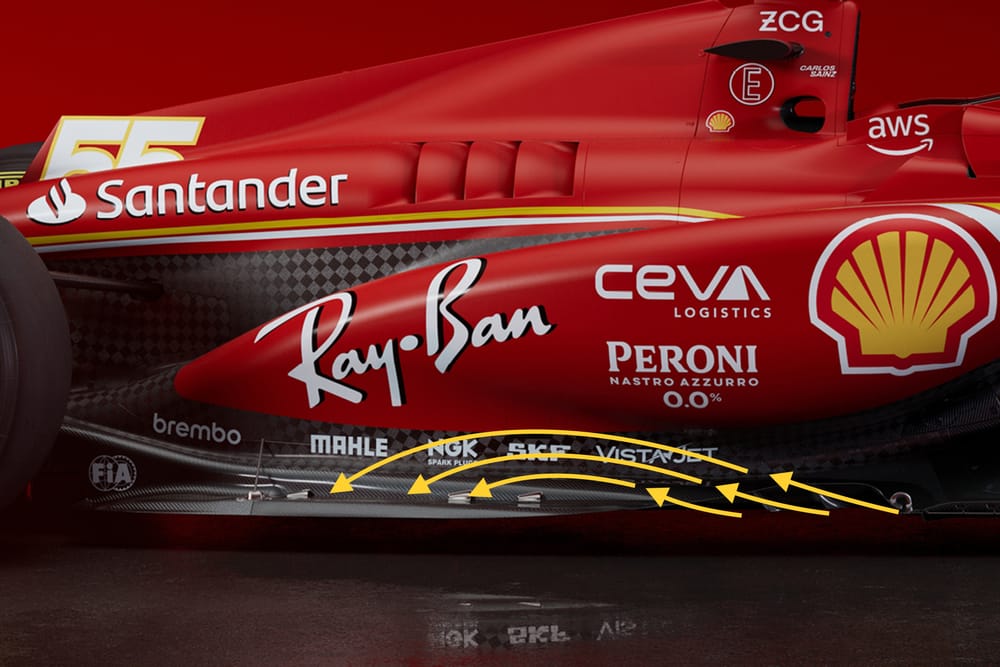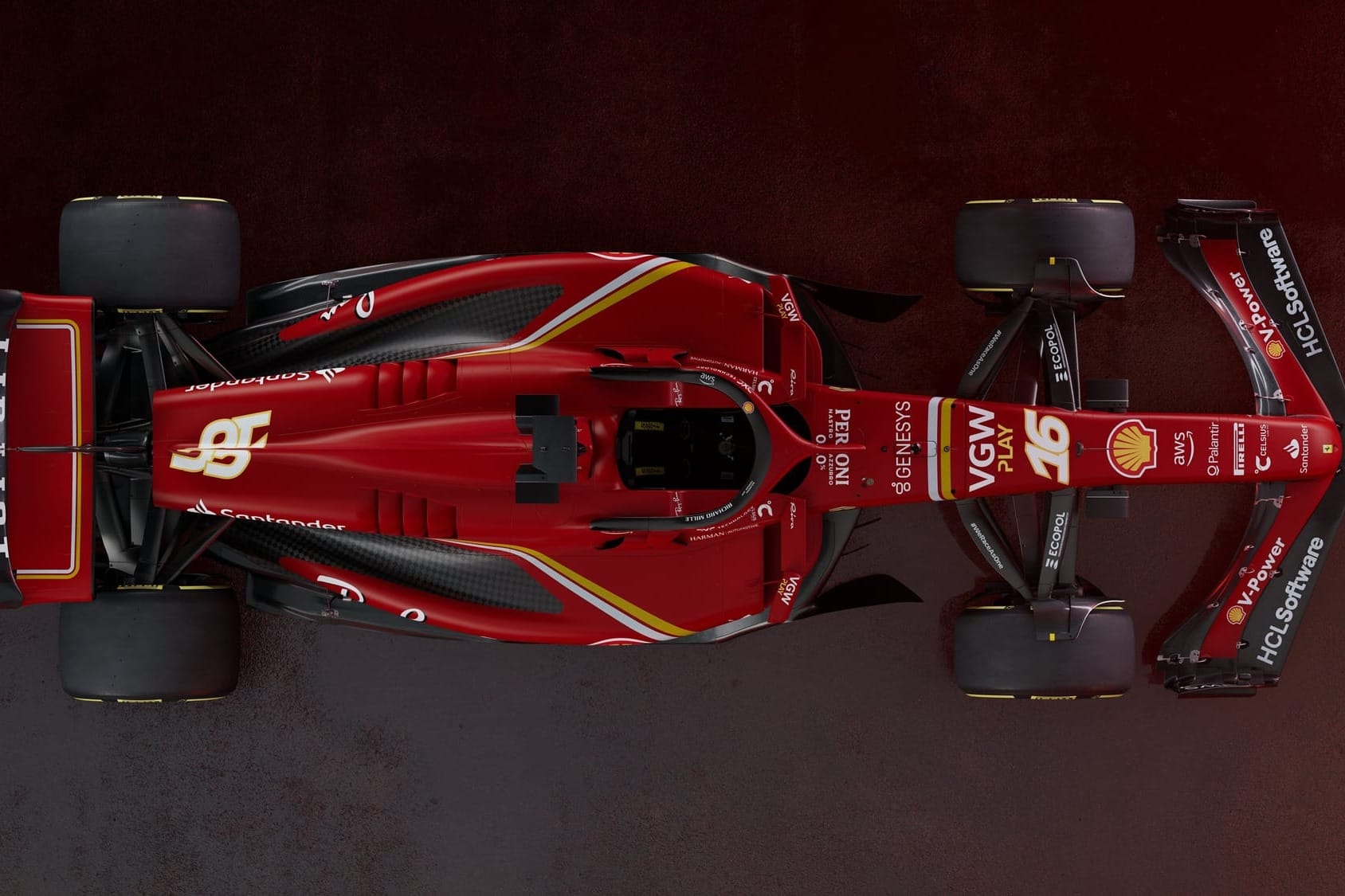Up Next

We always say it, but could this finally be Ferrari’s year to win championships again in Formula 1?
Looking at the performance since these ground-effect regulations came into play, Ferrari has been basically second-best to Red Bull - which really did get its head around what these cars required aerodynamically, and because of that has simply dominated these past two seasons.
On top of that, a few mistakes from Ferrari and the fact that Red Bull has a major weapon in Max Verstappen has made life very difficult for it, so in reality the Scuderia has probably done OK. But as we often say, winning is about beating the opposition - so no matter what the reason is, until you can do that you will be second-best at best.
With the signing of Lewis Hamilton for 2025 and beyond, the dynamic within the team will be very different this year. By doing this, Ferrari has made a statement - it doesn’t have full faith in its current drivers to bring home the best results, which means Charles Leclerc is no longer the golden boy and Carlos Sainz is on his way out. I expect some fireworks both on and off the track...
Ferrari finished the 2023 season on a reasonably high note, but still not capable of winning more than one race. No matter who the driver is, Ferrari will still need the kit to be capable of being better than the rest, so let’s have a look at what it has produced.
FRONT WING
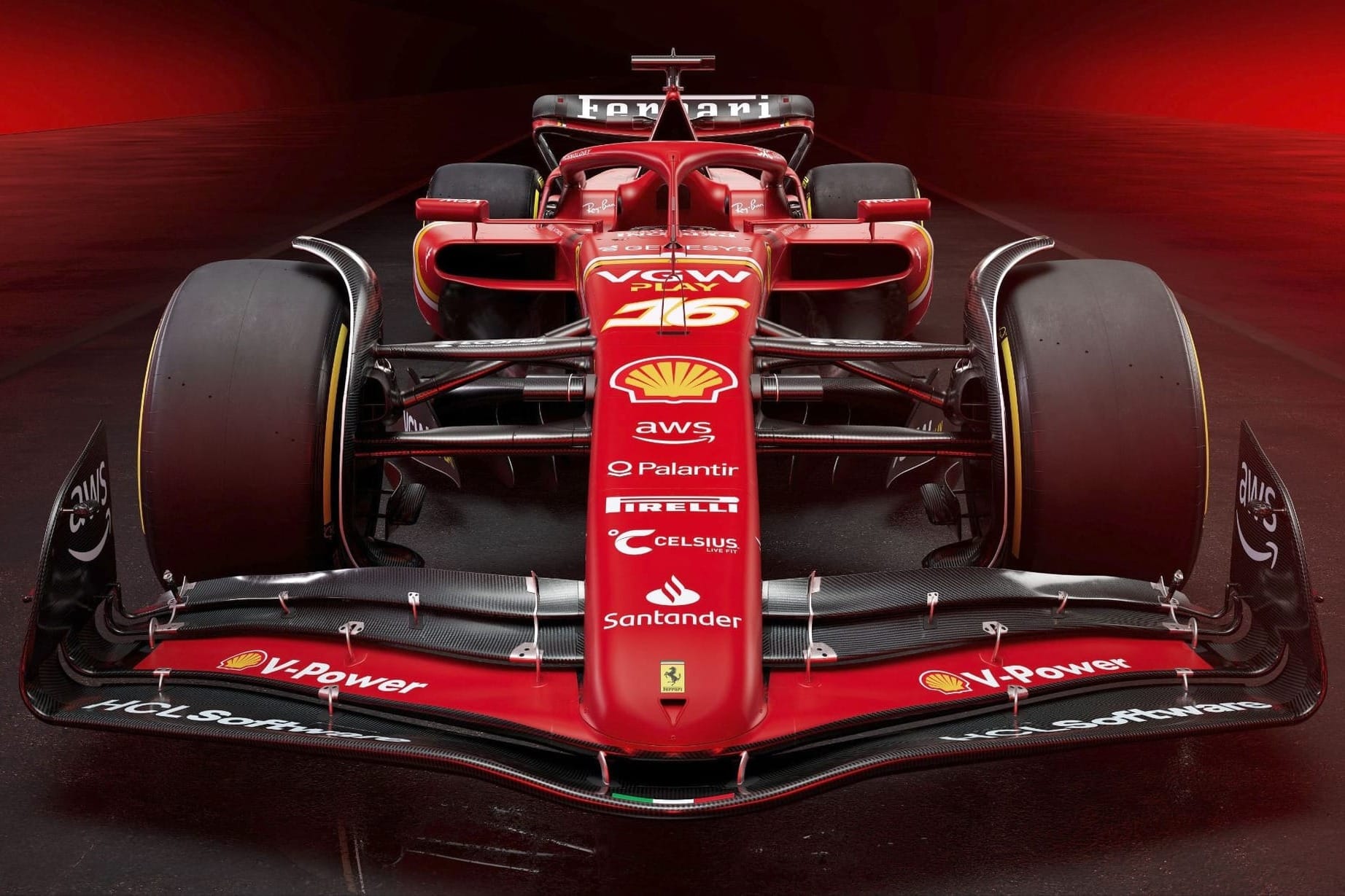
From this overall front view (and the comparison below), there don't seem to be any major changes in this very critical area which overall is a little worrying. This area sets up the flow structure the rest of the car has to deal with, so if it’s not optimised the rest of the car will suffer.
Comparing the detail changes from last year below, in my book they are all just that little bit of a negative.
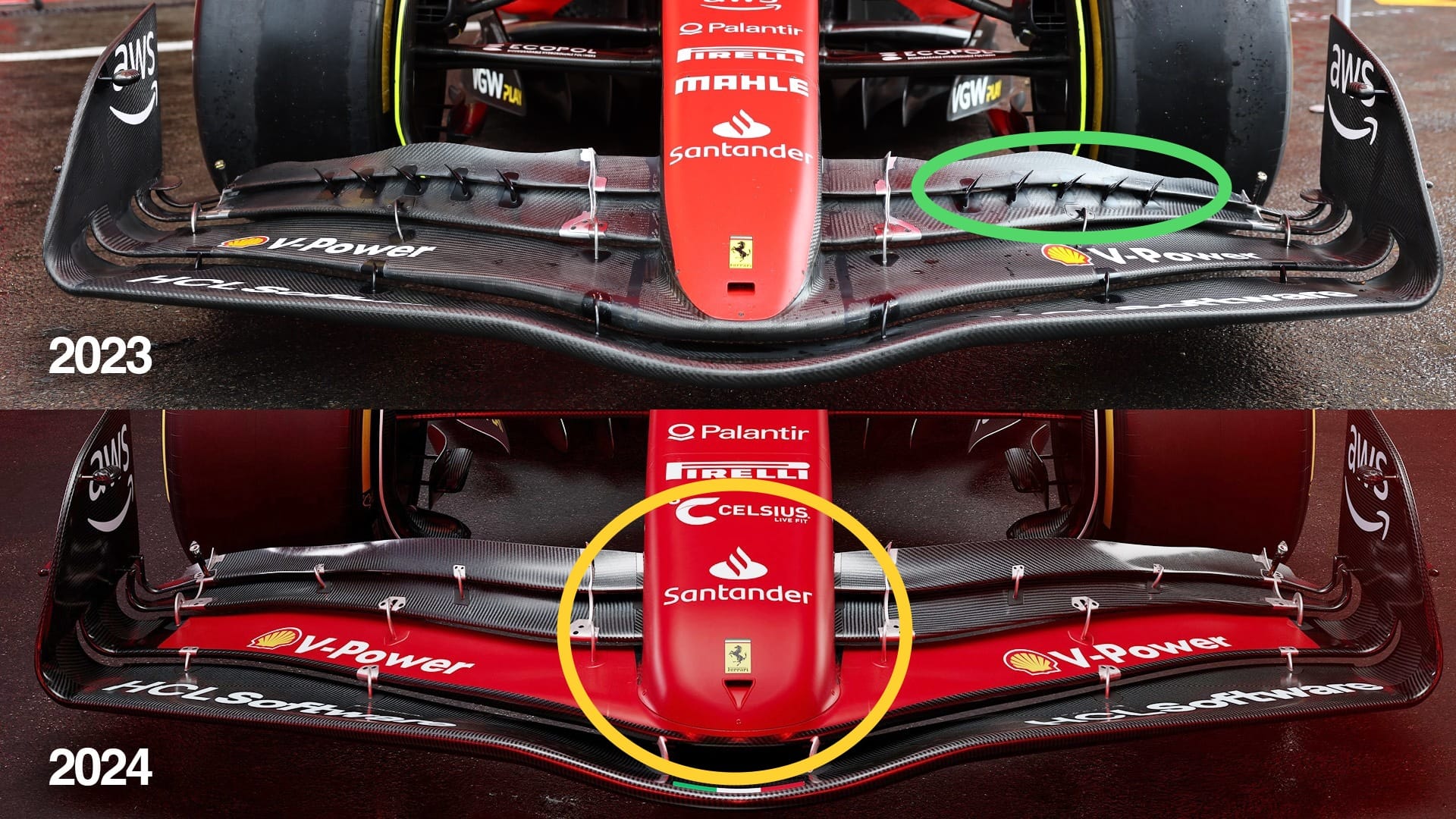
The front wing itself will obviously change to suit the downforce levels required for each circuit, so the rear flap trailing edge profile will change with that, but to me the negatives are those controversial outwash vanes supporting the rear flap in 2023 (green ellipse above) have disappeared - this will reduce the total outwash, which means more turbulent flow will go inside the front tyre.
The front section of the nose (yellow ellipse) is now more bulbous. This will affect the flow around the sides of the nose - not a major negative but not a positive either.
FRONT SUSPENSION
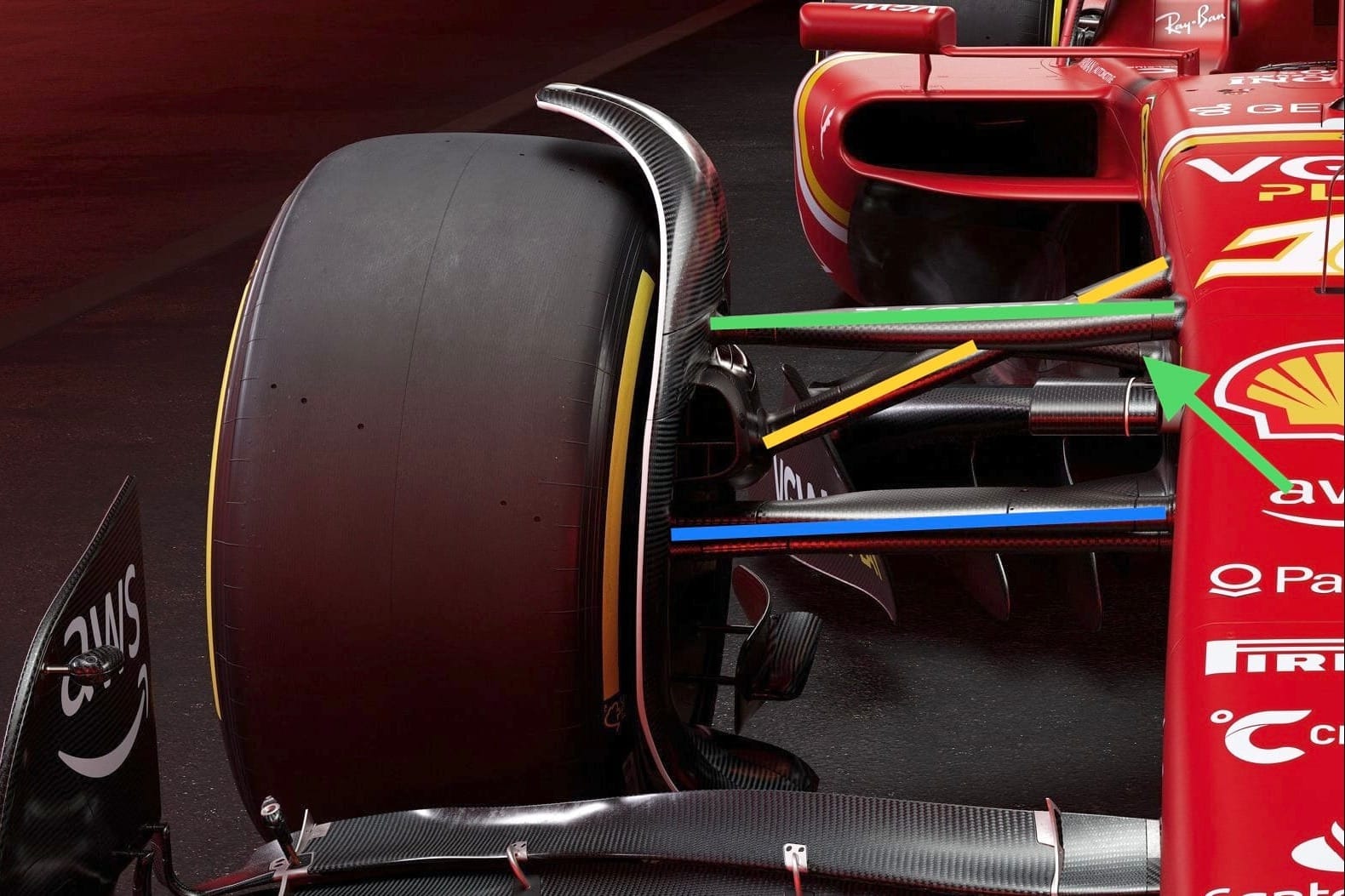
As for the front suspension, again it’s as last year utilising a pushrod system (yellow highlight).
The top wishbone forward leg (green highlight) is hiding the rear leg position. However, we can just see the inboard mounting (green arrow) and the front trackrod (blue highlight) is in line with the forward leg of the bottom wishbone.
This, as with most other cars, eliminates the aerodynamic blockage created with having a separate trackrod position.
In this plan view we can see in a little more detail the lower wishbone (light blue highlight), trackrod (dark blue highlight), top wishbone (green highlight) and pushrod (yellow highlight).
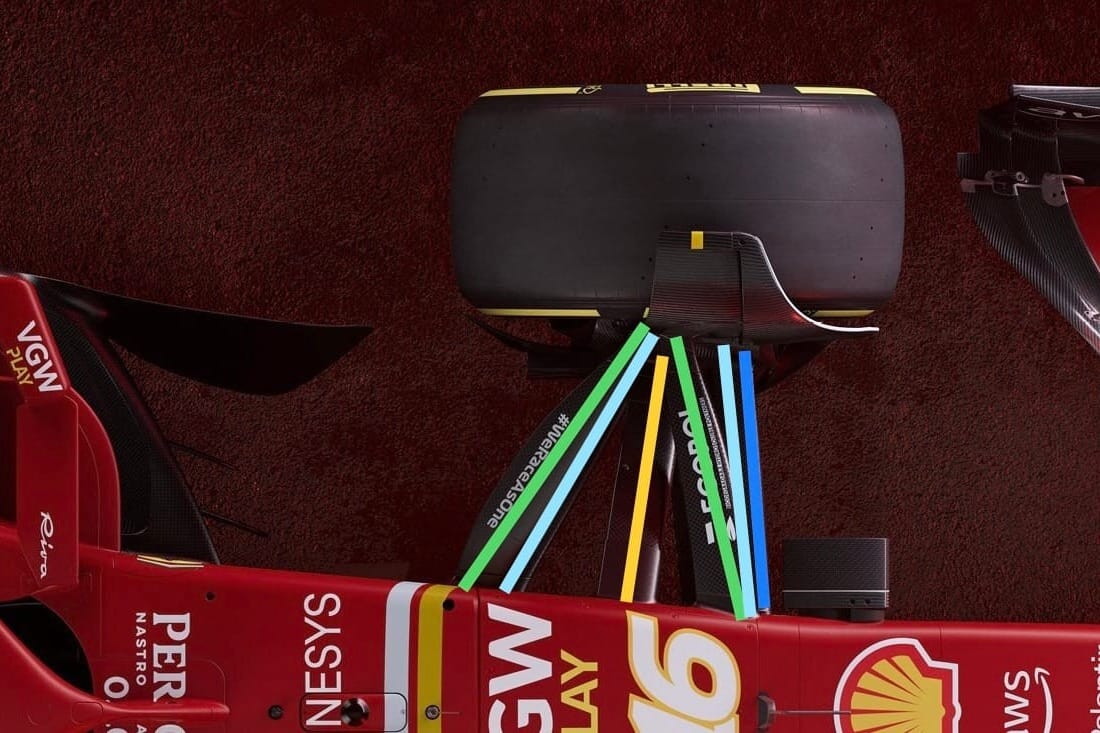
It’s a compact package, with a fairly narrow base for both the top and bottom wishbones keeping the rear legs away from the leading edge of the floor.
But overall there's nothing groundbreaking.
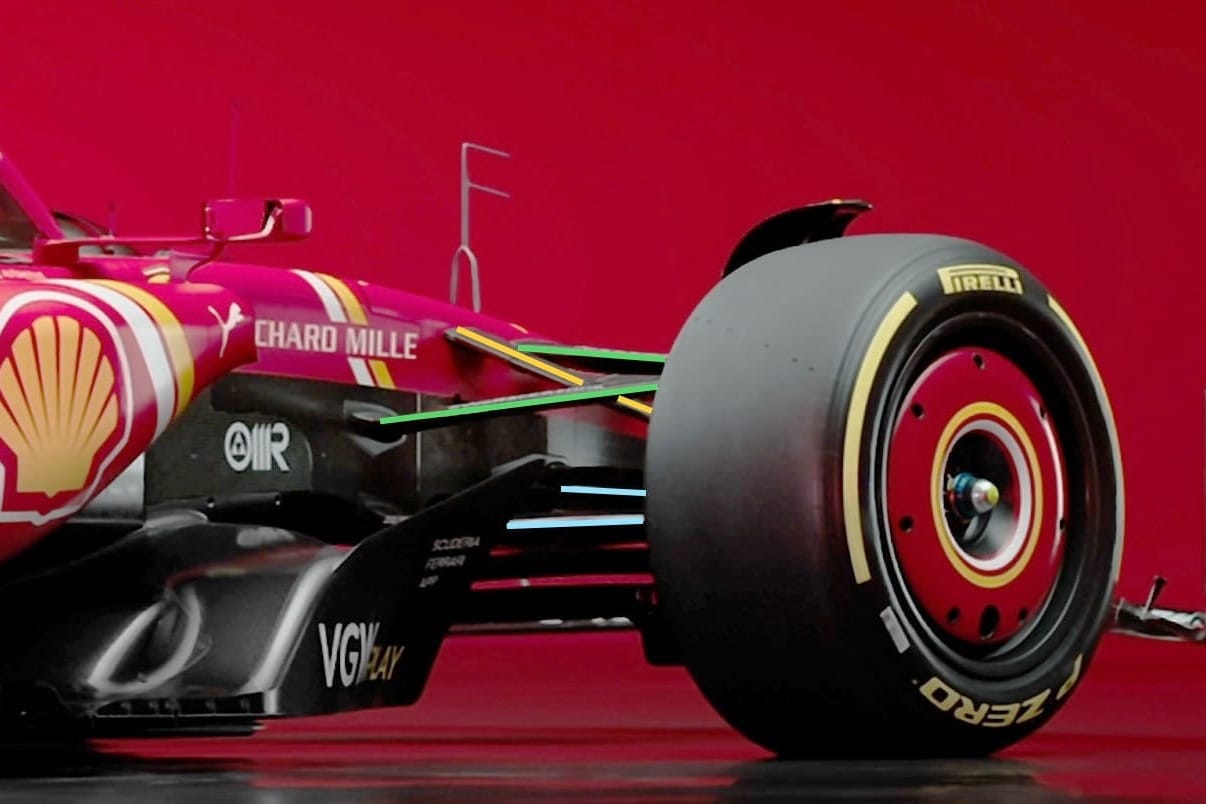
And from this rear view we can see a bit more detail of the suspension links and how much anti-dive Ferrari has on the front suspension.
The top wishbone rear leg (green highlight) is mounted quite a bit lower on the chassis than the forward leg, but the lower wishbone (light blue highlight) rear leg is also lower, so this difference between these two rear pickup points and the front leg pickup points is the amount of anti-dive the overall front suspension will generate to support the car’s ride height from changing dramatically from the weight transfer under braking.
At 6g initial braking, these cars will transfer around 300kg of load off the rear axle onto the front axle.
You can’t do much about that weight transfer or the fact the tyres will compress slightly but you can reduce the car’s ride height change to reduce the aerodynamic centre of pressure shift that would occur due to that ride height change.
If that centre of pressure moves forward with the rake change under braking and combines with the weight transfer under braking, the car would be very nervous under braking and very understeery when you apply steering lock.
SIDEPODS
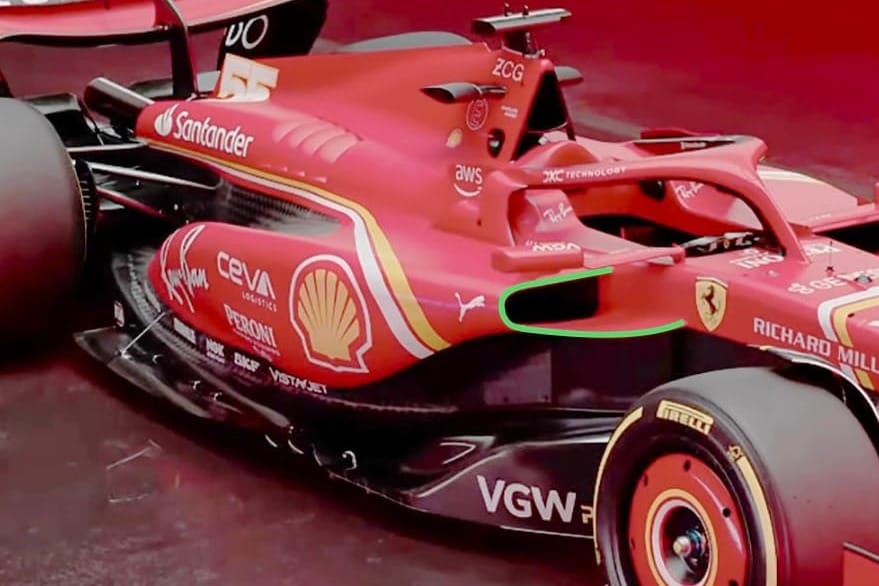
Moving rearward, we can see Ferrari has incorporated the Red Bull-style radiator inlet (green highlight).
In the comparison below we can see that the top surface has been moved rearward, but also on this side view the inlet is nowhere near as much of a top surface opening as what Red Bull had last year, or in fact what Aston Martin and RB have this year.
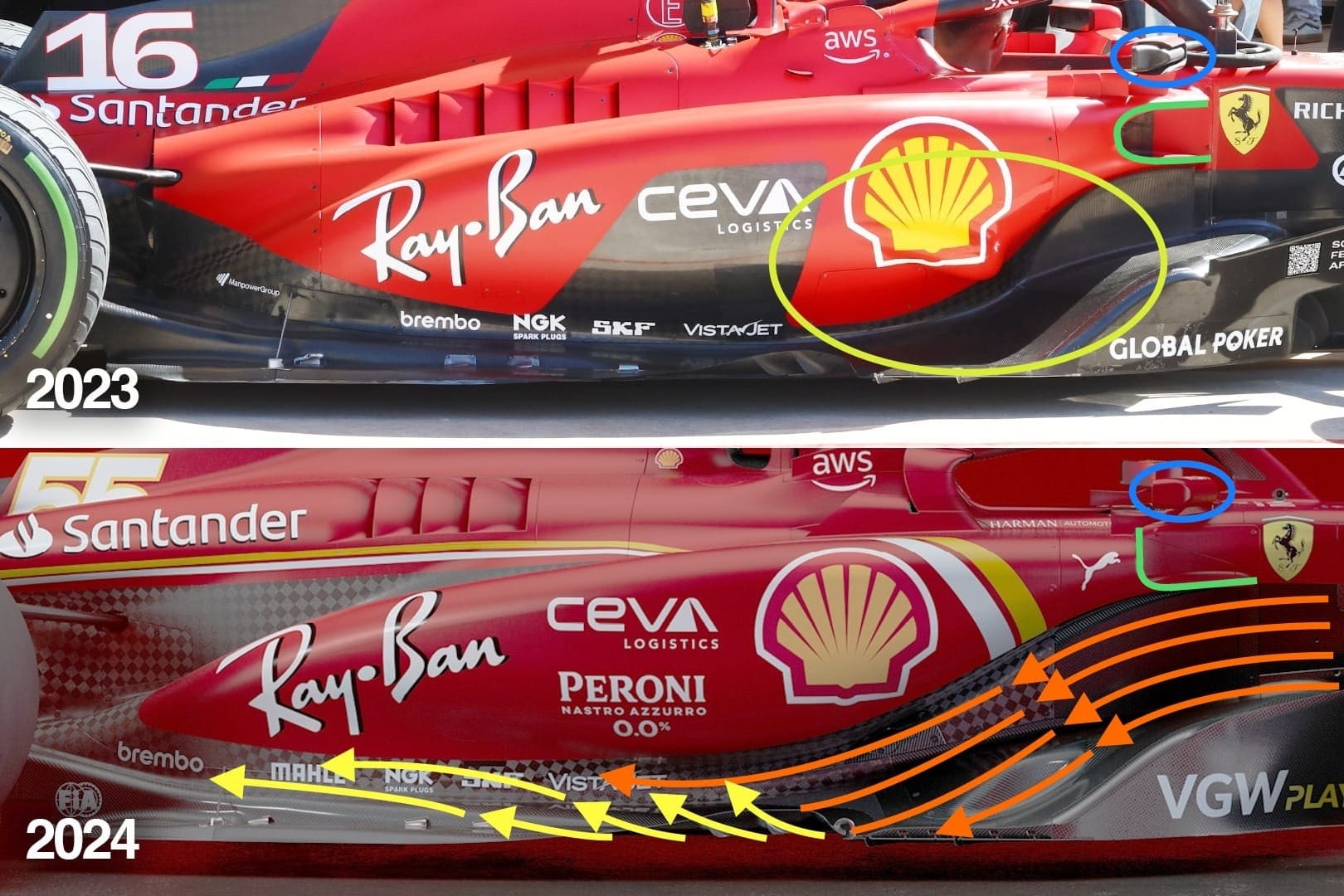
Ferrari has retained it as a high percentage of front opening, so it could be that the engine needs more cooling or that Ferrari just hasn’t got the same level of cooling technology as some other teams.
As for the undercut below the radiator inlet, Ferrari has blended this area much more than previously (orange arrows above), helping scavenge the airflow out (yellow arrows) from under that front corner of the floor.
Ferrari’s 2022 and 2023 cars were much more bulbous (light yellow ellipse) in this area, abruptly forcing the airflow outwards over the floor edge. Most other teams that we have seen so far in 2024 have adopted that bulbous approach, but Ferrari seems to have gone in the opposite direction.
Inside the body surface all teams have to house the cooling systems, so it may be as simple as making a decision on how you go about doing that and that becomes a major body surface requirement. But with the emphasis on airflow structure around the car, I would doubt that any team would make that sort of packaging compromise.
FLOOR EDGE
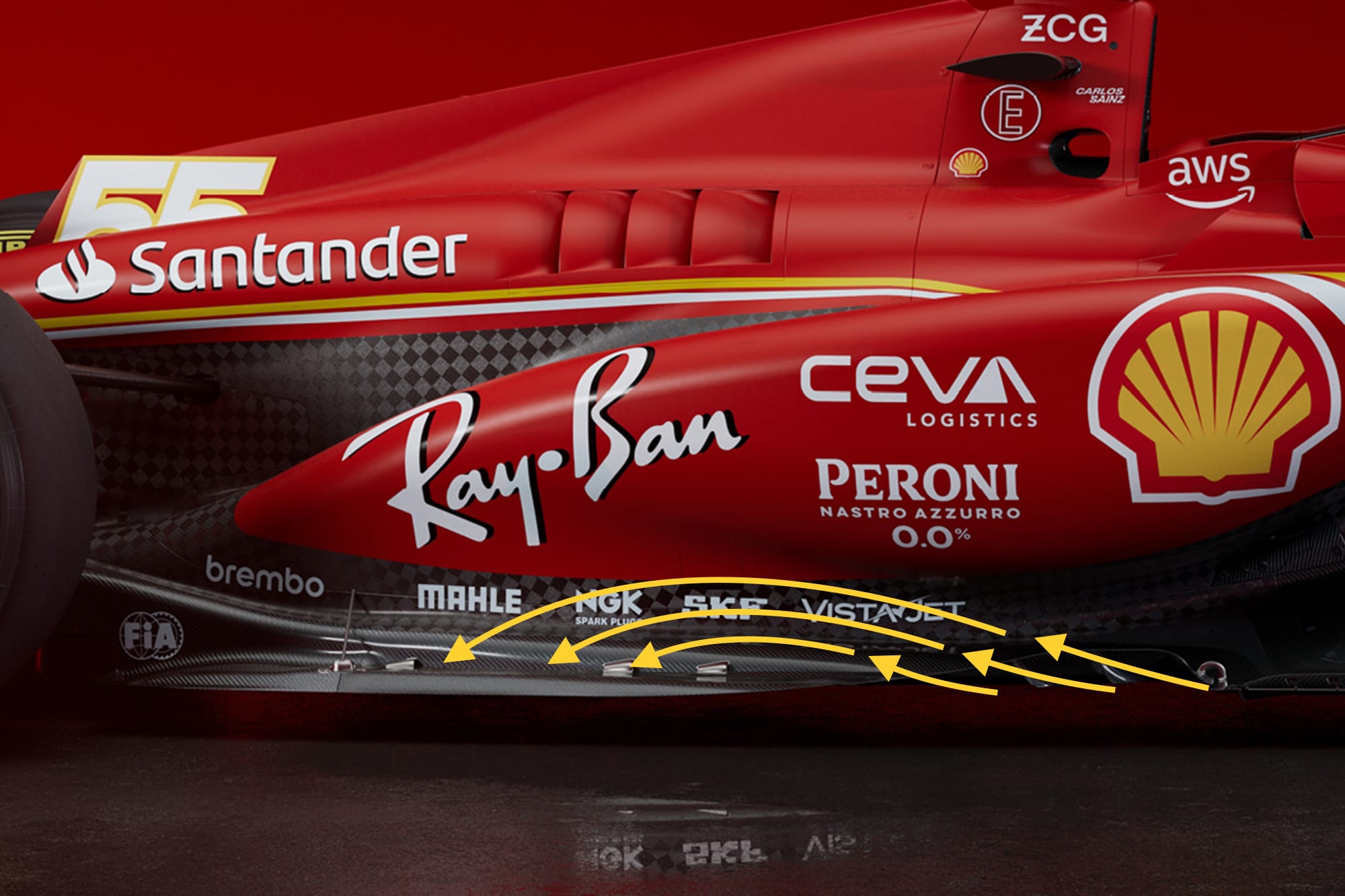
The floor edge detail is again very similar to last year, and it doesn’t have any extreme or aggressive features that I would say make it stand out.
It has the exit vanes on that front corner and the longitudinal edge vane with a slot gap, but actually that is all very tame relative to the approach we have seen from Red Bull in the past.
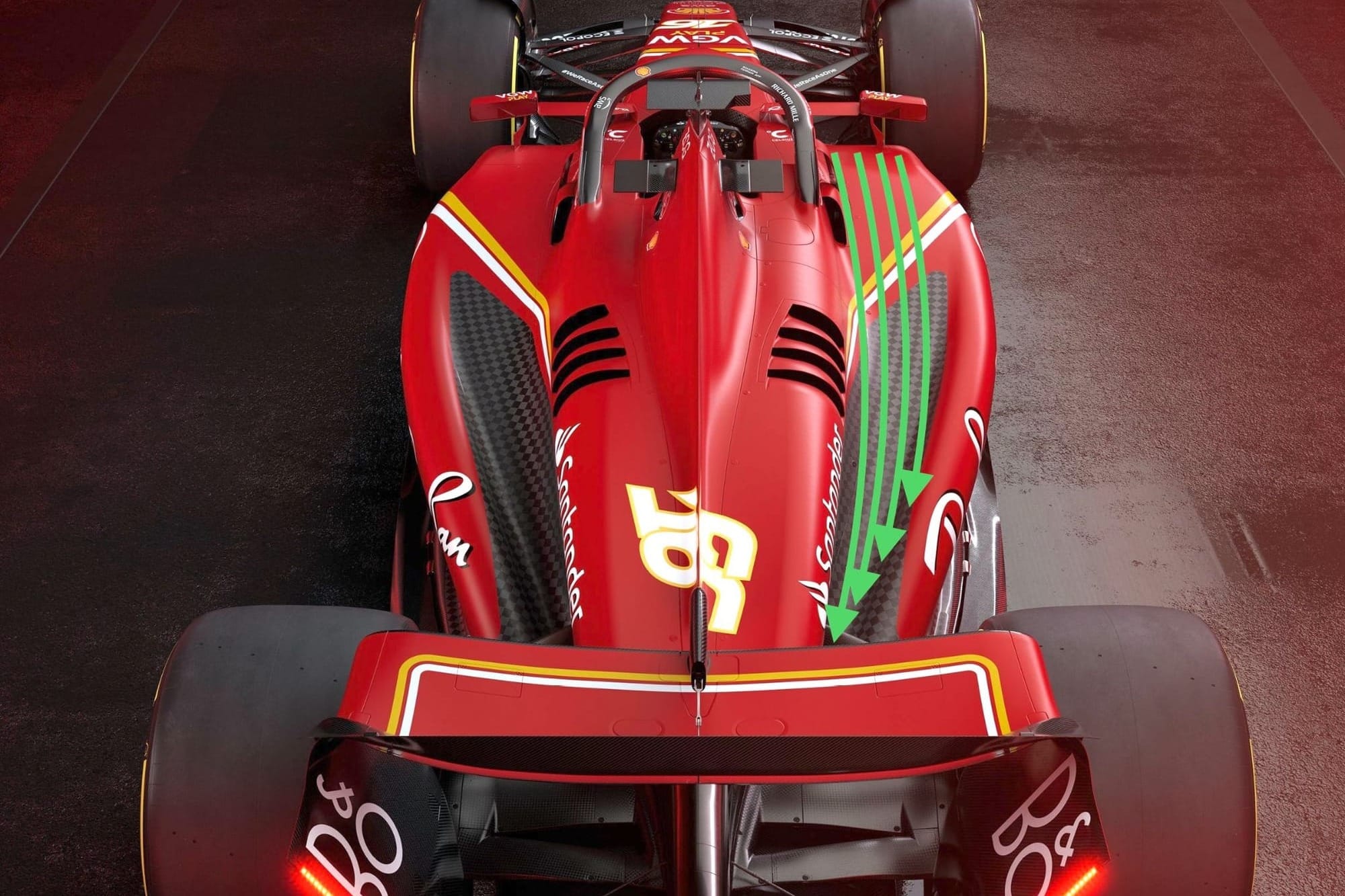
This overhead shot shows us the top body surface inboard gulley that gives the radiator airflow spillage (green arrows) somewhere to go that doesn’t cause much harm to the main airflow structure, or any other downforce-producing devices.
A MORE PROMISING DEVELOPMENT?
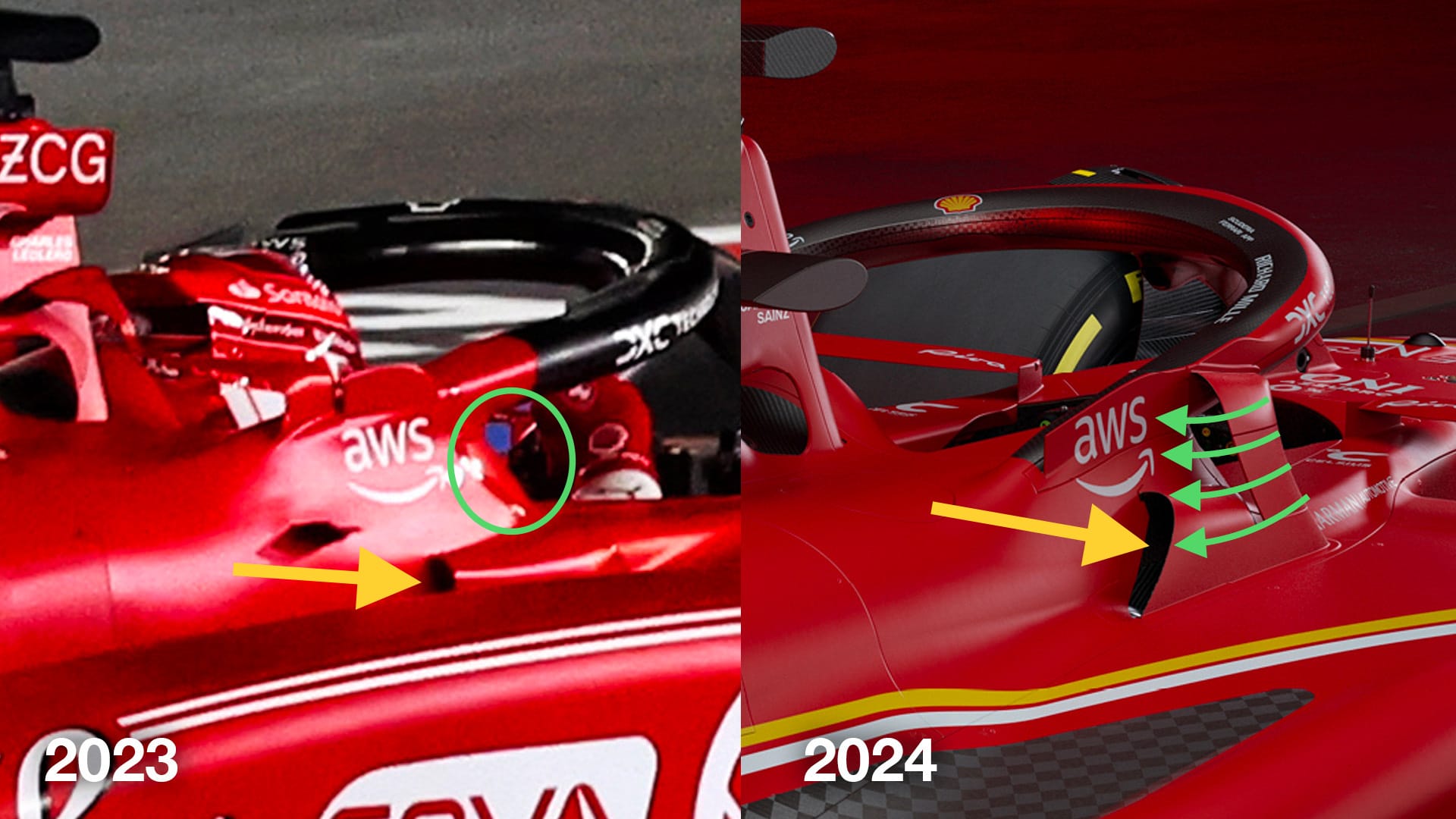
One of the more interesting things is this little duct (yellow arrow) that Ferrari has on the cockpit side where the halo rear legs mount.
Ferrari had this last year, but it has grown and now has another vertical vane (green arrows) in front of the exit to control the flow that is coming off the bluff front on the headrest side section (green highlight) shown on last year’s car.
Rumour has it that this is some sort of what used to be called an ‘S’ duct.
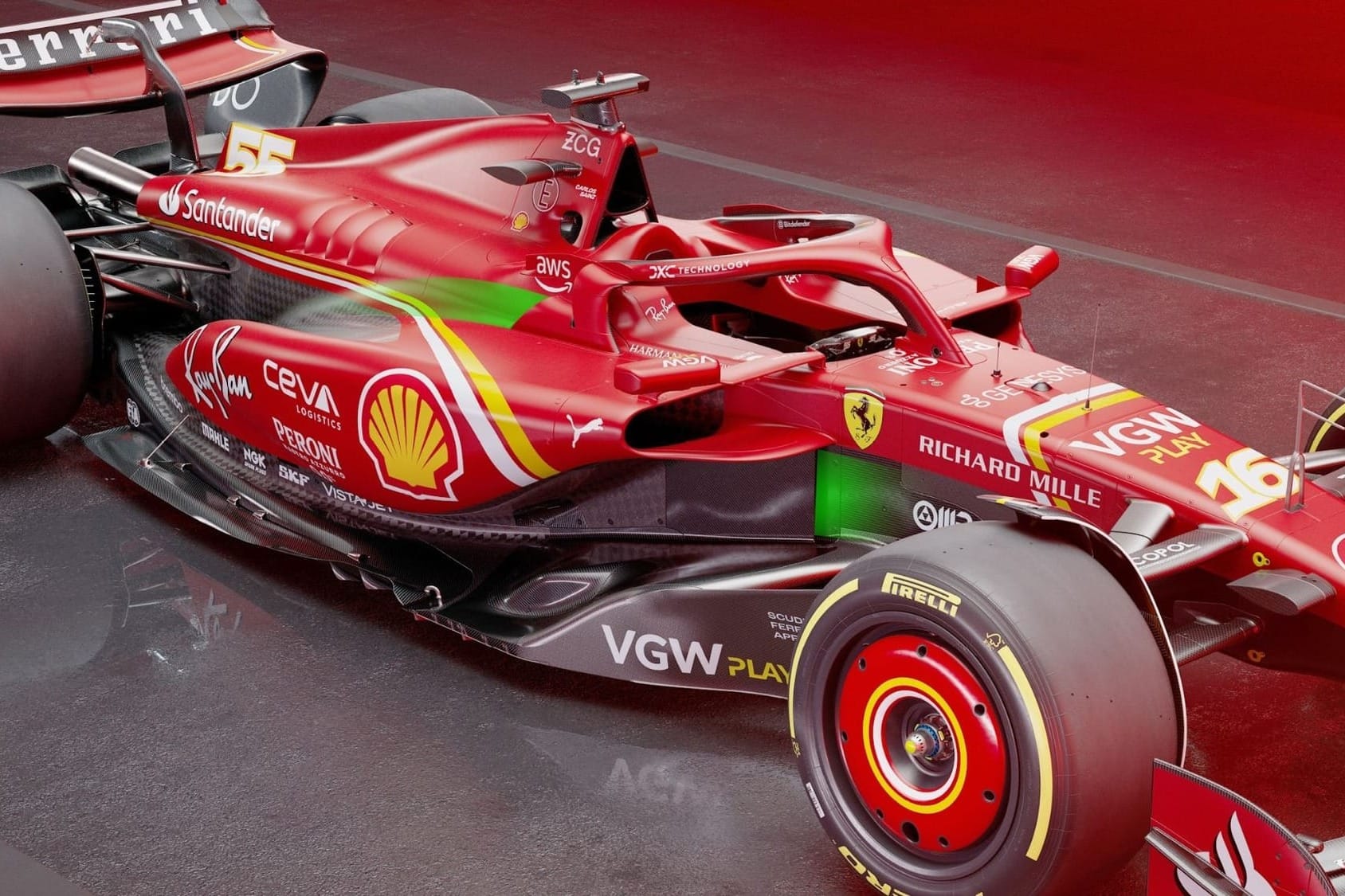
Where it gets its inlet from I have no idea, but if it is I would imagine it is from somewhere in the ‘V’ section of the front of the chassis.
Then again, Ferrari could just be cooling something down in the lower part of the chassis and that is simply the exit duct.
Either way, it should be more effective than it was last season.
REAR SUSPENSION

Moving on to the rear suspension, Ferrari has continued with a pullrod system (yellow highlight) - but with quite a few changes in the location of the components relative to the top wishbone (green highlight), which doesn’t look to have changed in location or geometry very much.
The inner mounting, and obviously with that the inner suspension components, are further rearward.
Trying to get some degree of how much this has changed I have put a horizontal magenta line at the trailing edge of the floor foot and a vertical line from the top wishbone inner end to where it goes through the body. The light blue arrows are to show this change, which I would estimate as about 5cm.
There are a couple of reasons for this. It could be because Ferrari has shortened the gearbox to allow it to move the engine rearward and have a longer but narrower fuel tank, allowing optimisation of the internal aerodynamic flow structure and the underfloor details around that fuel tank width.
Or Ferrari wanted to move the weight distribution rearwards just that little bit, to give the team more room to tune it to suit each track.
The FIA has defined the weight distribution window and with the car empty of fuel you have a 1.5% tolerance on the movement. It doesn’t sound much, but I can assure you, it can make a lot of difference to tyre degradation.
Either way, moving these internal suspension components rearward will have a negative effect on the width of the diffuser's inner pod section where it goes around the gearbox. Again, this is one of those decisions that had to be made months ago and now you have to live with it.
REAR WING AND DIFFUSER
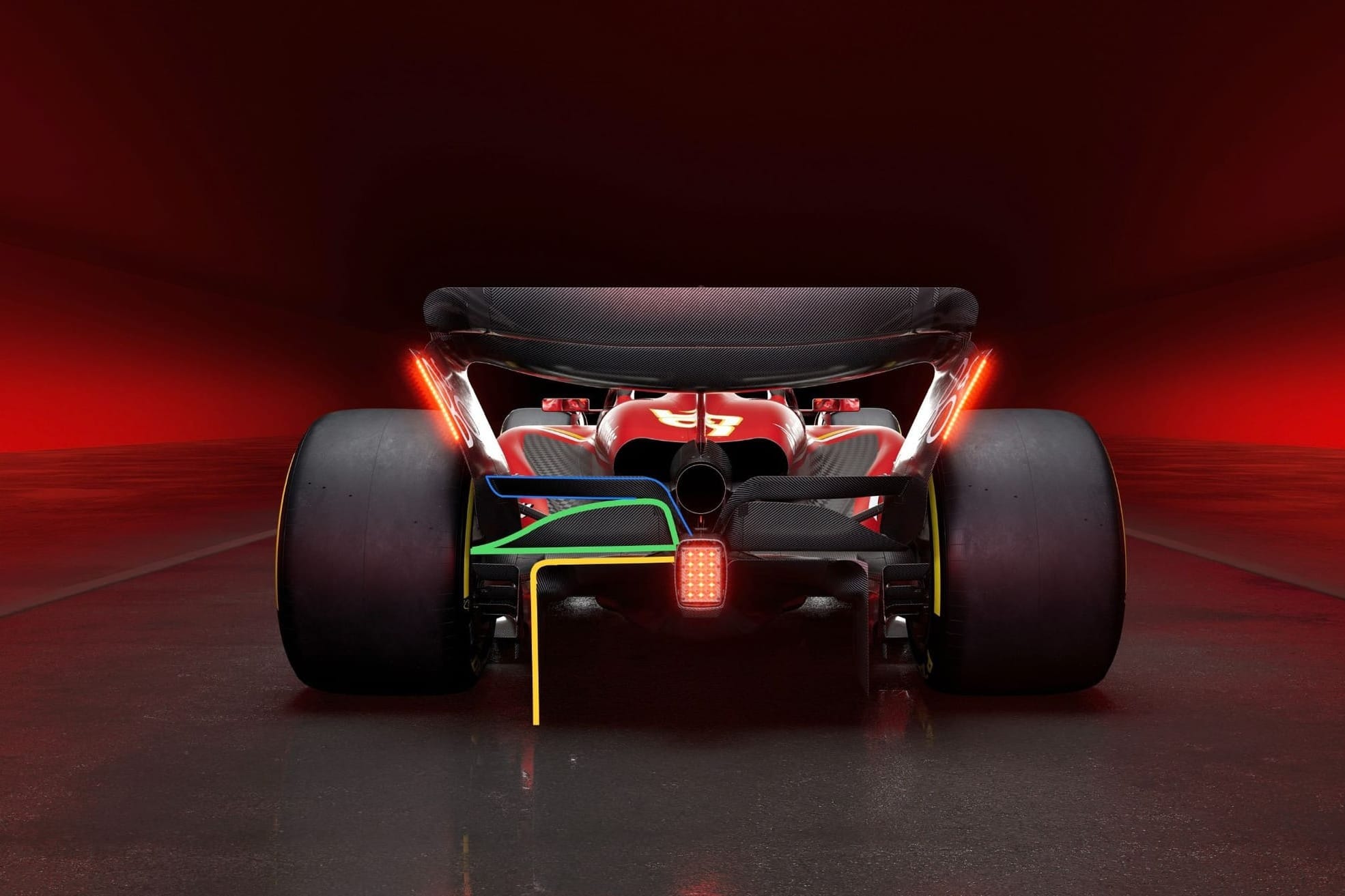
Is this the view that everyone else will be seeing in 2024?
As far as the lower beam wing is concerned, the regulations allow for a maximum of two elements within a certain box area.
When these regulations initially came into play, most teams (other than Red Bull, surprisingly) went for a simple two-element wing, but since then the development direction is to have a small forward upper element as a mass-flow turning vane and then an aggressive lower element focused on working hand in hand with the diffuser.
Working together, this combination can be very powerful at both producing downforce and reducing underfloor sensitivity - plus, when the DRS is open it will induce an aerodynamic stall on that section of the beam wing and the diffuser, giving a larger drag reduction which means higher top speed.
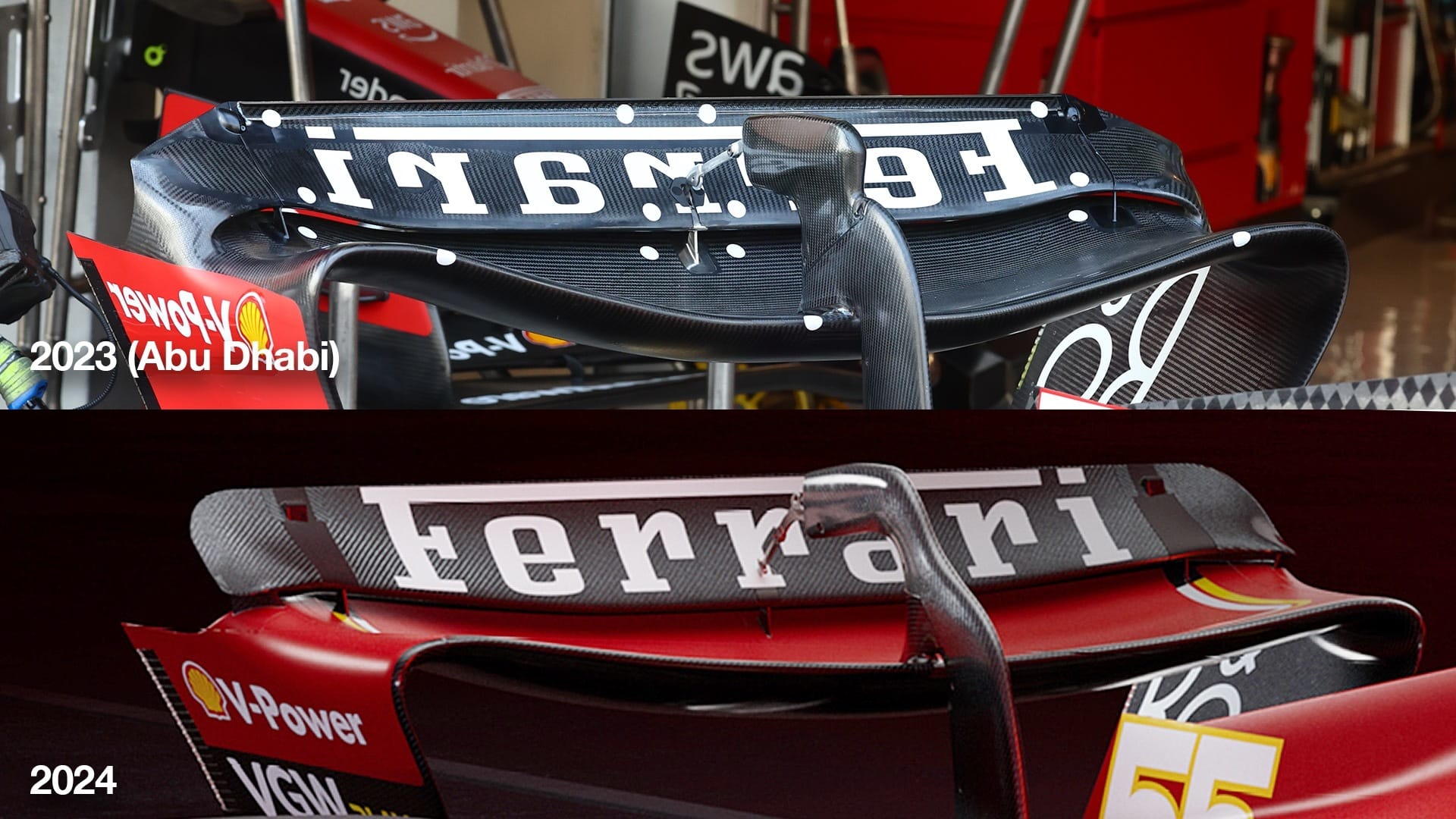
One of Ferrari's big problems last year was straightline speed. It’s always difficult to judge a car's efficiency from the rear wing, as it will change from circuit to circuit, but we can make some analysis from the wing design philosophy, and the fact that other than in Monaco that philosophy should be able to be carried through the range of wings.
This wing on the 2024 car is a lesser-downforce wing than the one on the 2023 car, but it’s the treatment where the rear flap joins the endplates (green ellipse below) that will create a more efficient package.
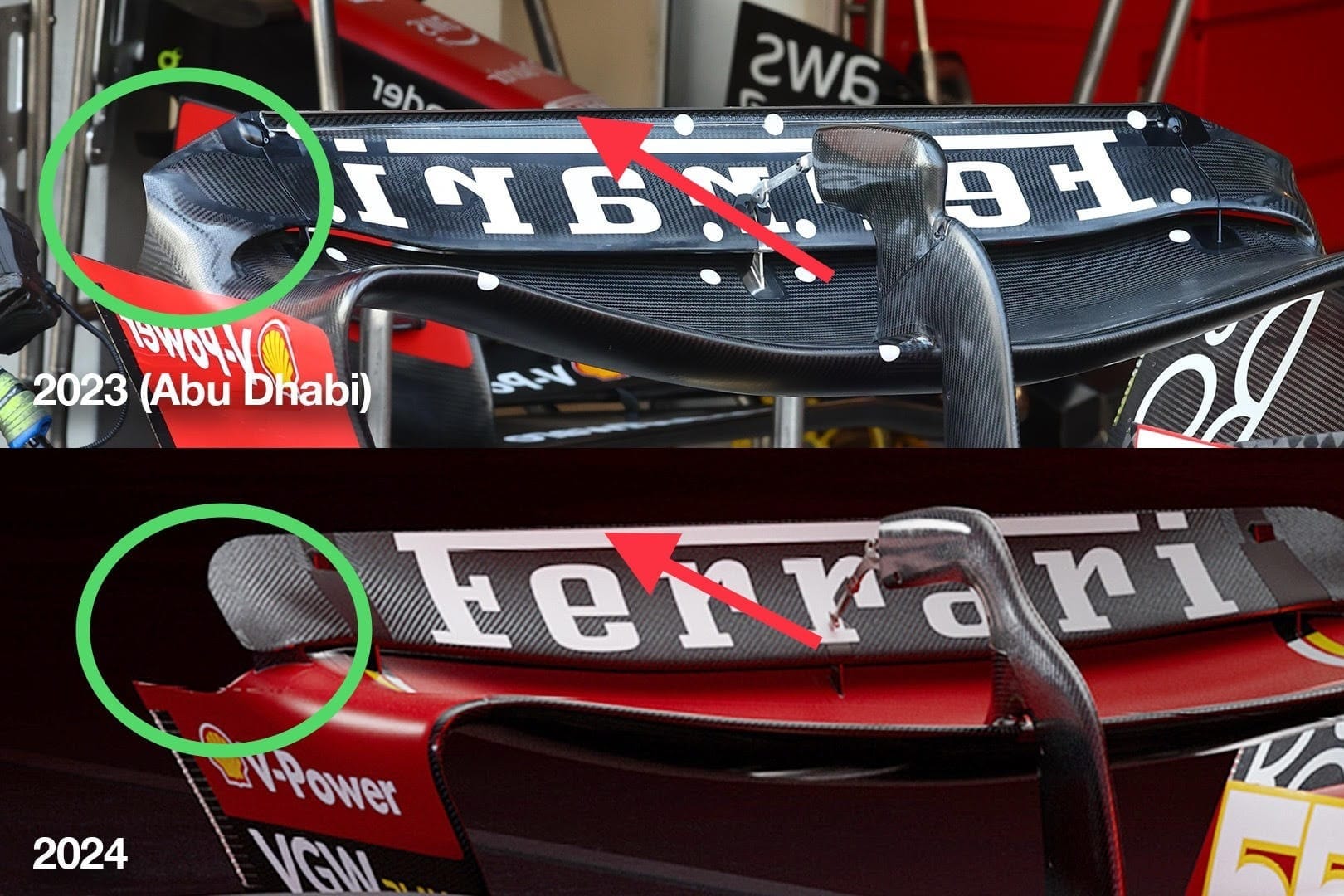
McLaren introduced this concept mid-season last year and most teams have had a tinker with it. It's not a magic bullet, but unless you need the maximum downforce you can generate, like you do in Monaco, this treatment will reduce drag.
We can also see there is no gurney flap on the 2024 car's rear wing flap trailing edge. I think that is a bit of wishful thinking as the gurney flap here is really effective when it comes to braking stability.
CONCLUSION
Overall, there's a few nice things and it's a tidy car - but I don’t think I’m seeing a lot of innovation that will take Ferrari to the top of the pile.
Again, it’s the parts that we don’t see that will really make the difference - but the parts that we do see influence the flow structure that allows those hidden parts to work to the maximum.
I’m a Ferrari fan, but I have to say I expected just that bit more.


